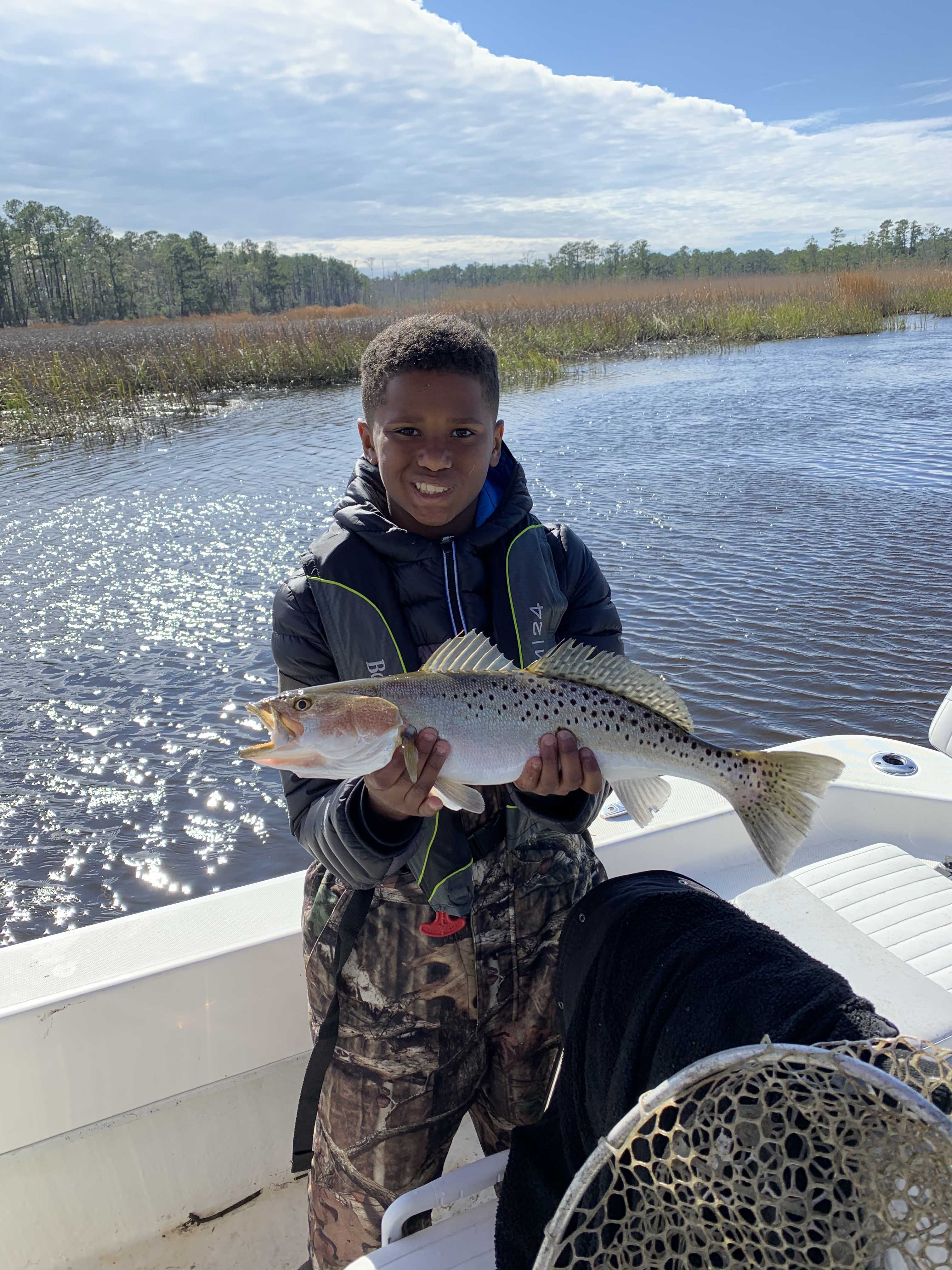Carolina Beach – March 19, 2020
Lewis, of Island Tackle and Hardware, reports that puffers and whiting have been caught on the beach by anglers using shrimp and sand fleas.
Inshore drum have been showing up in the rivers, where anglers can chase them with mud minnows or soft plastics (such as a Z-Man) on a jig head dropped to the bottom. There have been a few keeper trout mixed in with the drum.
Whiting have been chasing shrimp down at the mouth of the river.
Nearshore wrecks are producing black sea bass and tautog, and bottom fishing 40 miles out is seeing good numbers of fish, such as snapper, grouper, and porgies.
King mackerel are being caught near the Tower.
Wahoo are at the Stream, along with yellowfin and blackfin tuna. Some yellowfin have also been caught at the Steeples.
Christian, of Seahawk Inshore Fishing Charters, reports that there have been scattered amounts of small red drum biting, but a few slot fish are mixed in. Most of the reds are in the 16-17” range, and the few slot fish have been around 18-23”. Lower tides and around shell bottom creeks and points have been the best places to find them. Dead shrimp and scented soft plastics are the top two producers.
A few black drum are starting to show up. They are ranging from 12-15” and eating dead shrimp on the bottom. The black drum are in the same areas as the reds.
Luke, of Spot On Charters, reports that trout are still around, and the ones you can find are usually larger. Smaller hard baits (like the MR17) and small soft plastics are producing the most fish. Since the water is still so cold, fish can’t metabolize larger baits. Water clarity has been very clear, so using darker colors seems to get the most bites.
Around the mouth of the river, there have been schoolie red drum, and using soft plastics in the shallow water in the middle of the day has produced good numbers. You can occasionally find a black drum or trout mixed in.

SZS with his first trout caught using a Reef Runner crank bait. He was fishing the Cape Fear with John Pike.
Tommy, of Mungo Fishing Charters, reports that water temperatures are on the rise from the middle 50s into the 60s.
Red drum can be found at docks, oyster bars, deep pockets in the creeks, and on the flats with water in the 1-2’ range. You can find red drum this time of year in schools from 10-20 fish and upwards to 100-200 fish. As the warmer weather continues, most of these schools of drum will start splitting up into smaller schools and be more spread out.
The best baits for the red drum have been dead shrimp, mud minnows, and fresh cut mullet, and the better locations are around docks, oyster bars, and deep pockets in the creek. When fishing the flats for reds on nice calm days, a good go-to bait is Gulp Shrimp 4” pearl white and assorted Z-Man soft plastics (like the 4” scented Mulletron).
Small flounder have been caught in the same areas.
Black drum are biting fresh dead shrimp on a Carolina rig with a 3/4 or 1 oz. weight. Frozen shrimp works as well, but the fresh shrimp will produce better results.
Speckled trout fishing continues to be good coming off a mild winter. The specks are near inlets, in the boat basins, and back in the deep holes in creeks with dark muddy bottoms. These specks can also be found on the flats on warm sunny days. The better baits for targeting trout are assorted soft plastics, and these soft plastics should be rigged weedless, weightless, or on light weighted (1/16 to 1/8 oz.) jig heads. Hard baits like MirrOlure MirrOdines (in assorted colors) will also produce. The baits should be worked low and slow while the water is still cold, but don’t be afraid to try working them faster on a warm, sunny day.
Rod, of OnMyWay Charters, reports that bottom fishing for black sea bass in the 14-22 mile range on rocky bottom and hard bottom ledges has produced large numbers of fish. The larger black sea bass, though, will most likely be out in the 18-24 mile range.
False albacore have been seen in the same areas, and there’s been Atlantic bonito mixed in with the albies. Trolling Clarkspoons has been effective.
King mackerel are out at the 65-66 degree water temperature break, which has been around 35 miles out. A great place to target kings is at the Tower, along with the Twin Wreck area offshore of WR4 and the ledges and hard bottoms southeast of WR4.
There has been a great wahoo bite at the break and near the Nipple, with the best catches being made in 69-73 degrees of water at depths of 130-170’. The typical spread of ballyhoo on wire leaders has been working, with the planer rods seeing the most action.
Vertical jigging in 130-200’ of water has been fairly productive when targeting amberjack, blackfin tuna, and African pompano. Rock piles and rocky live bottoms are the best places to look. If you are venturing offshore, the best option to locate fish is to look at a water shot and find the best pocket or body of water.
Once April hits, fishing will be phenomenal from the beach out to the Gulf Stream. Atlantic bonito will move in close when the water hits the 60-62 range, and when the water reaches 65 degrees, there will be a brief period of time that spanish mackerel will be mixed in with them. The best way to target the bonito is to use a run-and-gun method; when you see surface activity, quickly move to the school and either use casting jigs or troll Clarkspoons off #1 planers like you would for spanish.
Kure Beach Pier hasn’t yet reopened for the season.





